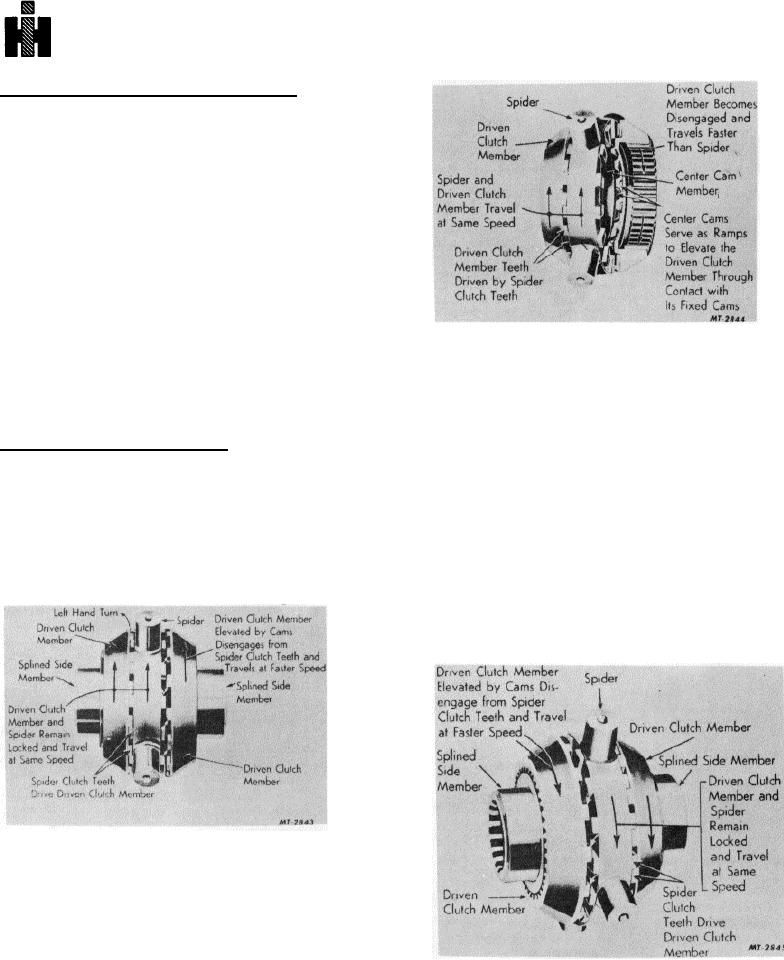
MOTOR TRUCK SERVICE MANUAL
AXLES-REAR
Forward Right Hand Turn--Braking Condition
In this situation, the vehicle is moving forward, but the direction
of torque of the ring gear is reversed because the vehicle is
being slowed down by braking action. This reversal of torque
is produced by the action of road traction driving the wheels
against the torque of the engine. In this condition, when a
right hand turn is negotiated, the left hand (outside) wheels
rotate at ring gear speed since the left hand driven clutch
member remains fully engaged while the right hand (inside)
wheels rotate slower than ring gear speed.
The symmetrical design of the differential makes it possible to
function in the manner described above which is in effect
directly opposite to that described as Right Hand Turns
Forward Direction.
Fig. 8 Forward Left Hand Turn (Cross Sectional View)
It should be noted that if a turn is negotiated in such a manner
that power is first applied and then braking action is
Right and Left Hand Turns--Rearward Direction
encountered before the turn is completed, the differential is
designed to function without interruption and will automatically
The operation of the NoSPIN differential when required to
take care of such reversal of torque.
make turns while traveling in a rearward direction is identical to
that when making turns in a forward direction. When moving
Left Hand Turn--Forward Direction
rearward in a turn under power, the inside wheel is driven at
ring gear speed while the outside wheel is driven by the
In making a left hand turn with the vehicle driven in a forward
ground faster than ring gear speed. When the rearward turn is
direction, the left hand wheel is on the inside of the turn and
nearing completion and the vehicle is slowing down because
the power is applied to it so that it must rotate at ring gear
of application of the brakes, the outside wheel is driven by the
speed. The right hand wheel travels through the greater arc,
ground at ring gear speed, as its driven clutch member is fully
being on the outside of the turn. Its driven clutch member
engaged and acts to "brake" against the engine torque. The
becomes disengaged from the spider clutch teeth, permitting it
inside wheel is driven by the ground through the smaller arc of
to be rotated by ground traction faster than the ring gear (See
travel and since its driven clutch member is disengaged, it will
Figs 7 and 8)
rotate slower than ring gear speed.
Fig. 9 shows the operation of the differential when a right
hand turn in a rearward direction is being negotiated
Fig. 7 Left Hand Turn--Forward Direction
The operation of the driven clutch member on the right side of
the assembly in the foregoing instance is illustrated above.
Fig. 9 Right Hand Turn--Rearward Direction
52

